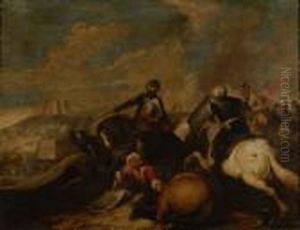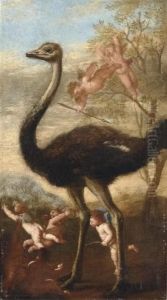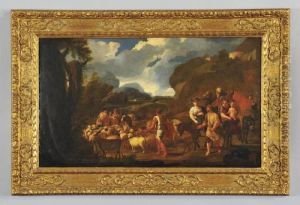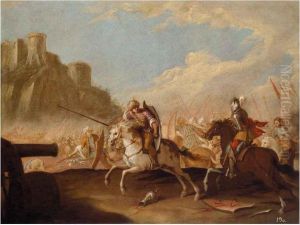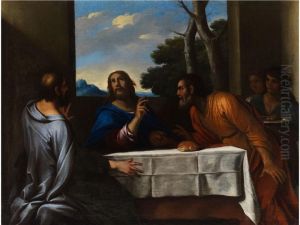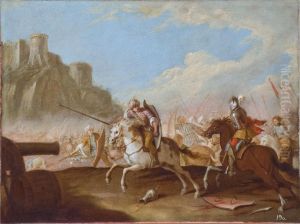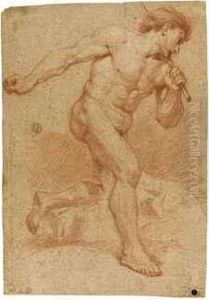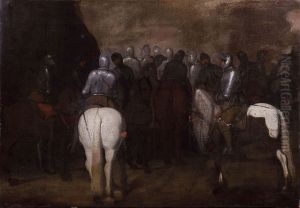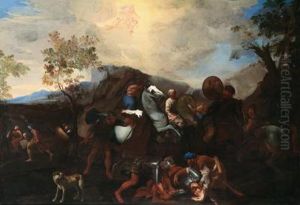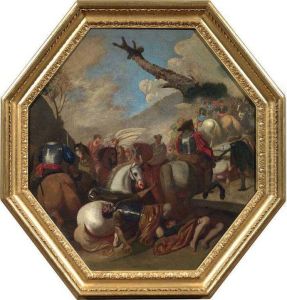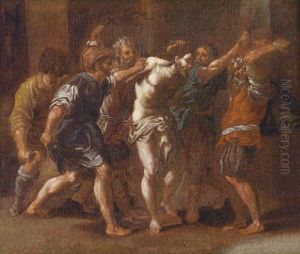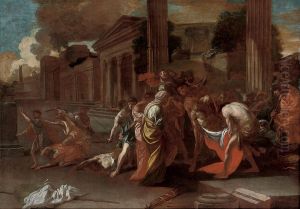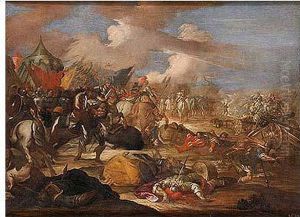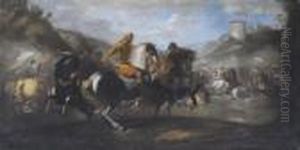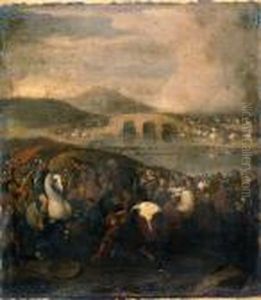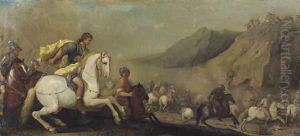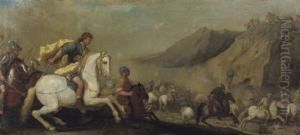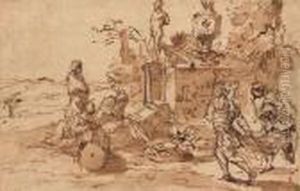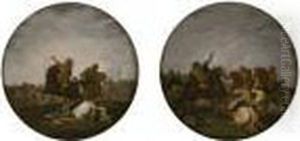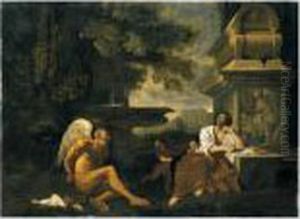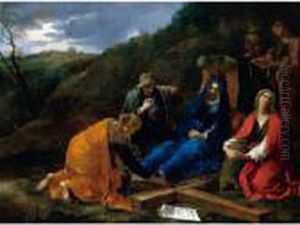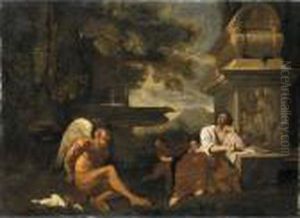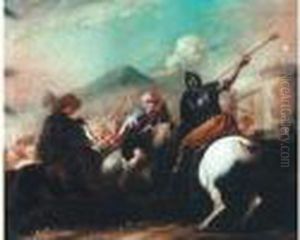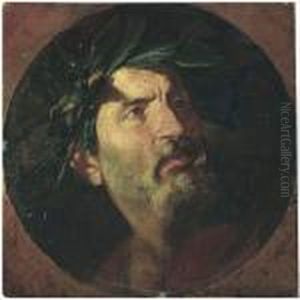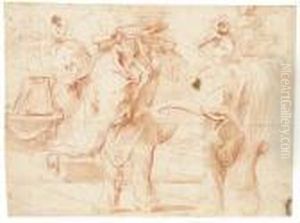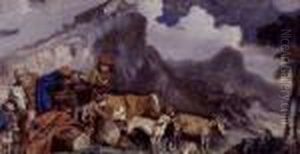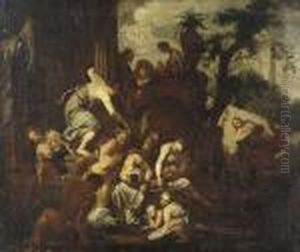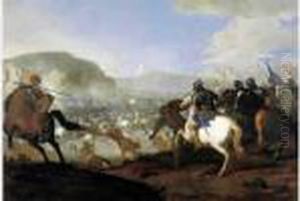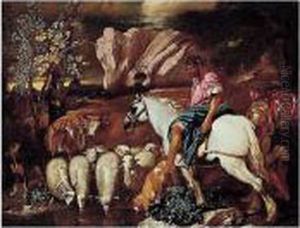Andrea Di Lione Paintings
Andrea Di Lione, also known as Andrea dell'Aione, was an Italian painter of the Baroque period, born in 1610 in Naples. He was a student of Massimo Stanzione and later, he followed the style of the famous Neapolitan artist, Luca Giordano. Throughout his career, Di Lione was known for his versatility, working on both small cabinet paintings and large altar pieces, showing a mastery in various subjects ranging from religious scenes to mythological and allegorical subjects.
Di Lione’s work was characterized by dynamic compositions, rich color palettes, and a strong sense of movement, which were typical of the Baroque style that aimed to evoke emotion and passion. While he was heavily influenced by his contemporaries and the prevailing Baroque sensibilities, Di Lione’s work also displayed a certain originality and a flair for drama.
Despite being less well-known than some of his peers, Di Lione enjoyed a successful career in Naples, which at the time was one of the most vibrant artistic centers in Italy. He was a part of the prolific Neapolitan school of painting, which produced a large number of distinguished artists during the 17th century. His works can be found in various churches in Naples and in private collections.
Andrea Di Lione’s career spanned a period that saw the transition from the high Baroque to the early Rococo, and his style evolved accordingly. He continued to work until his death in 1685. Because of the commonality of his name, some of his works have been confused with those of other artists, which has led to some difficulty in attributing his work. Nevertheless, he remains a respected figure for his contribution to the Baroque movement in Italy.
